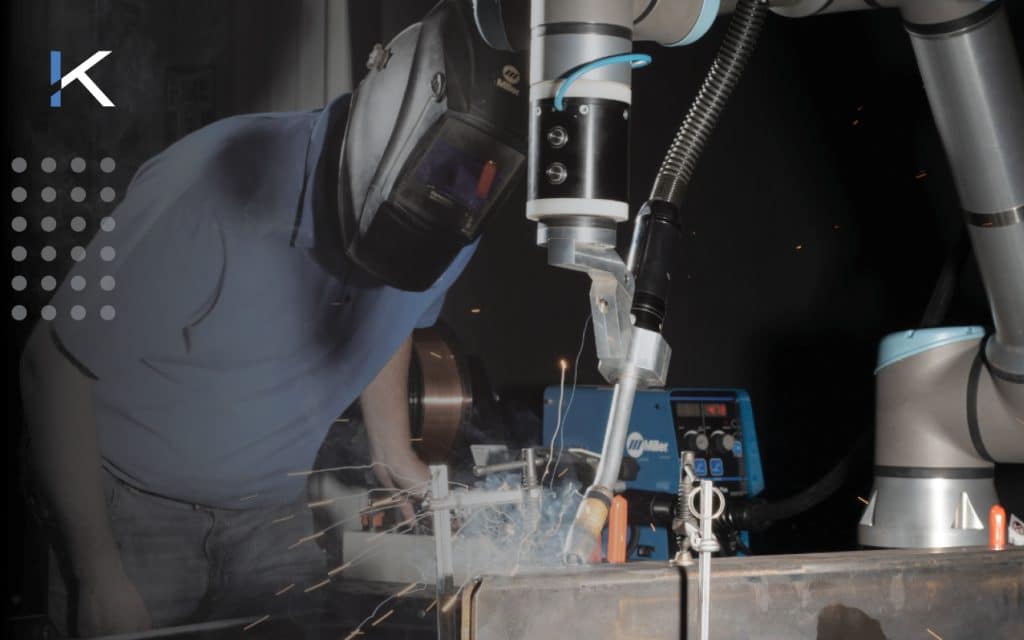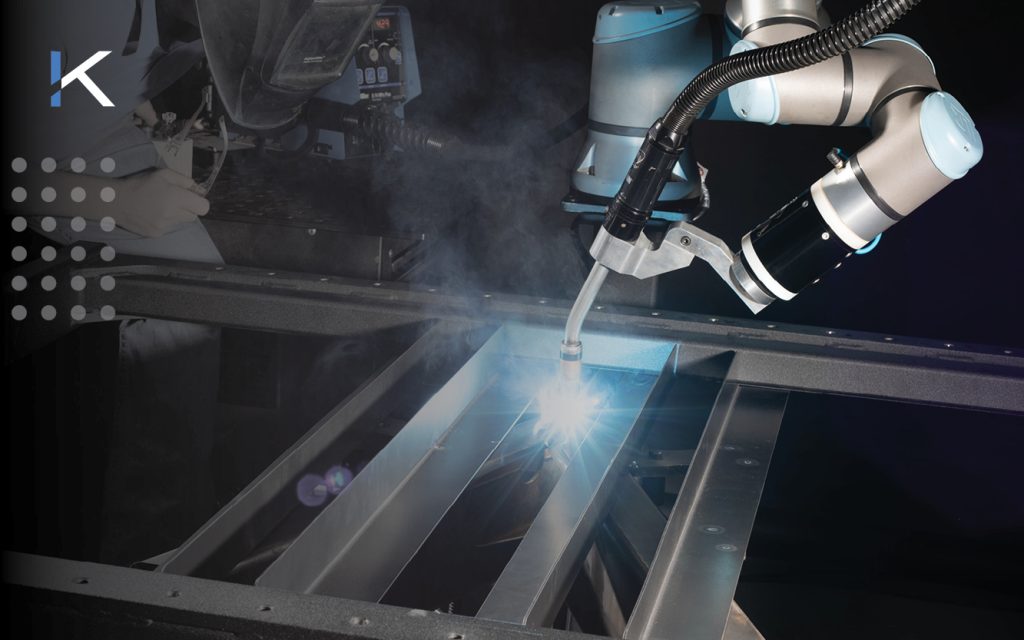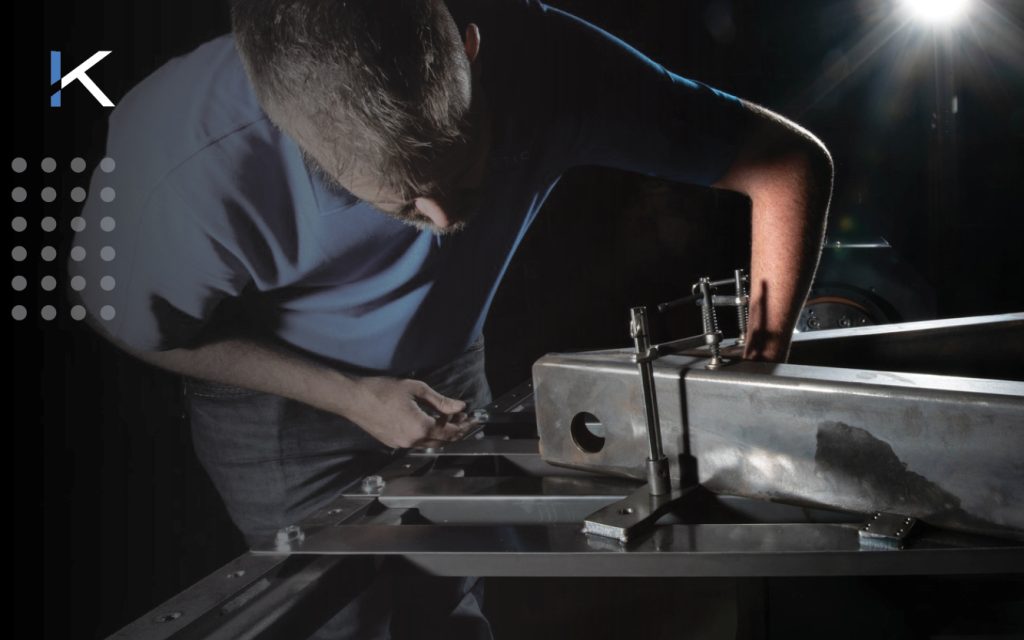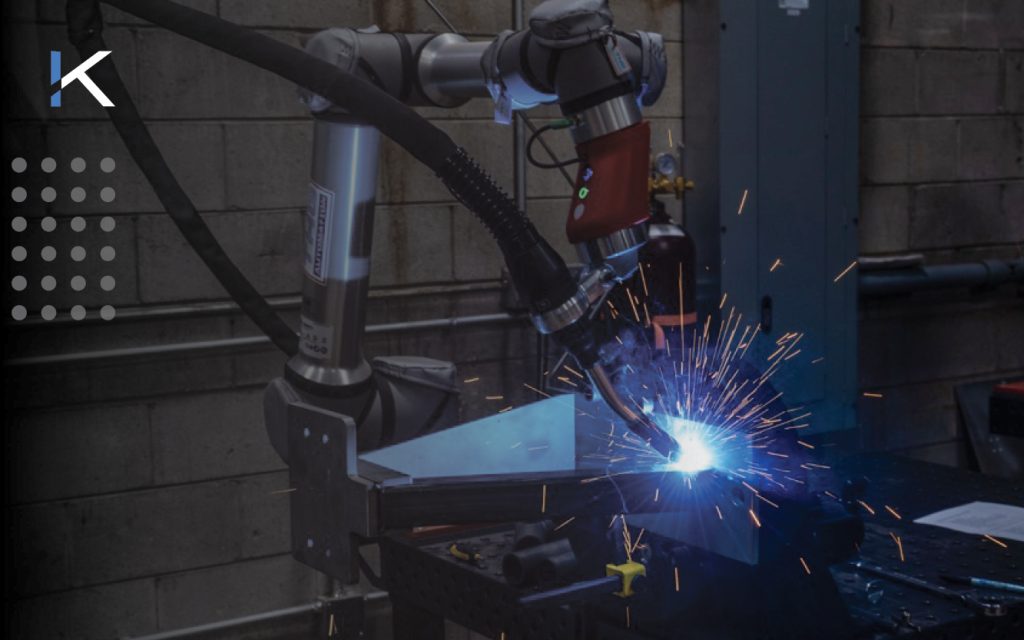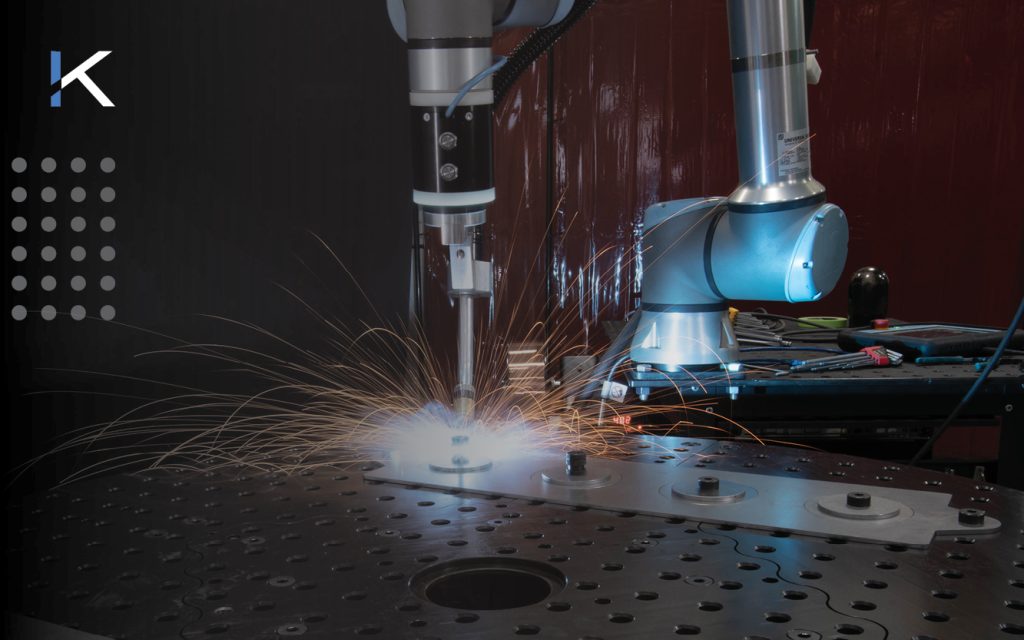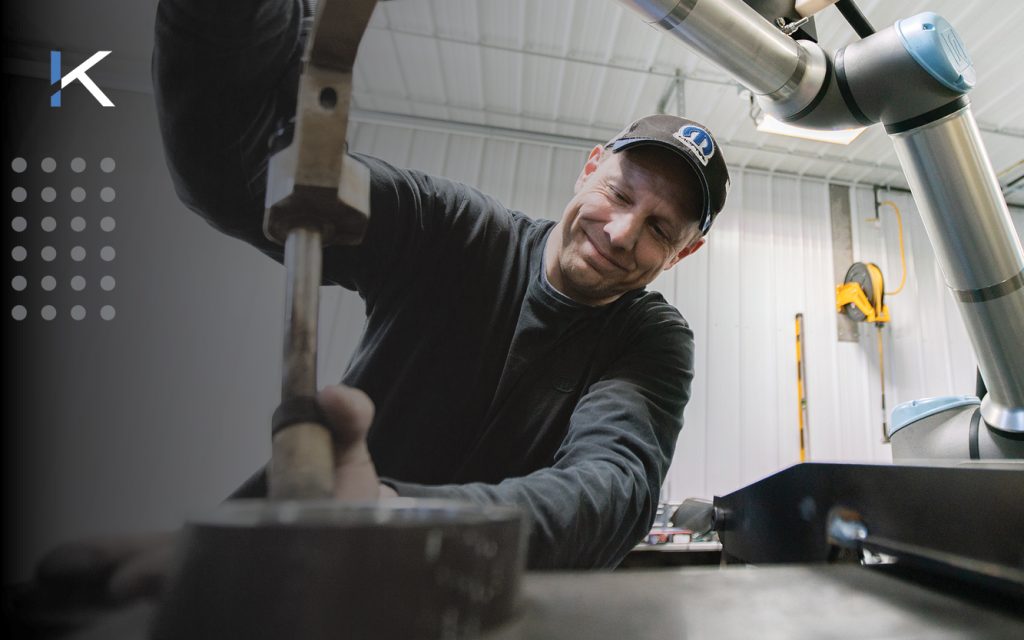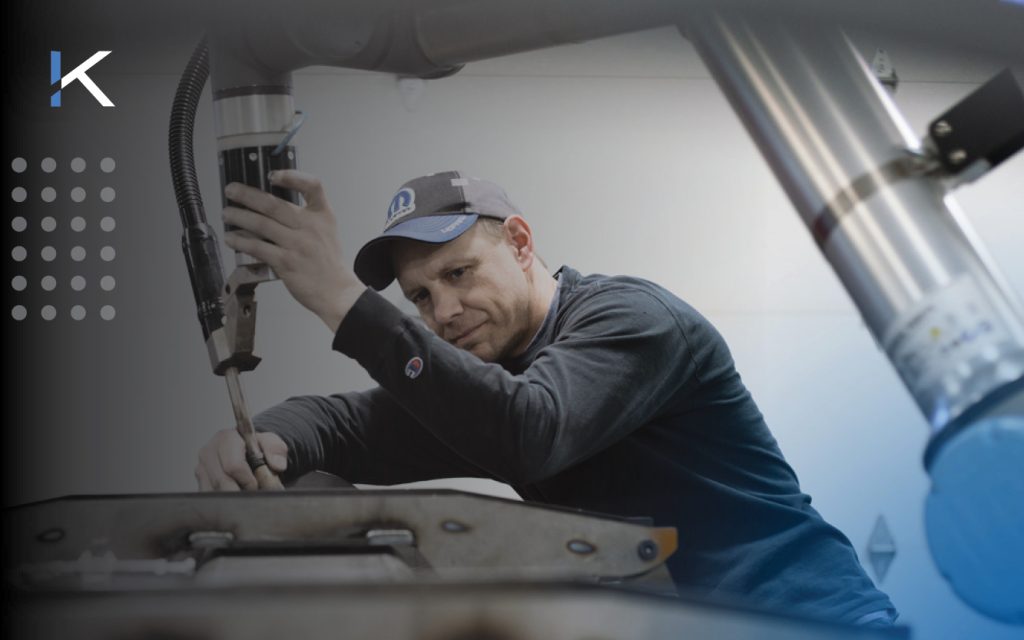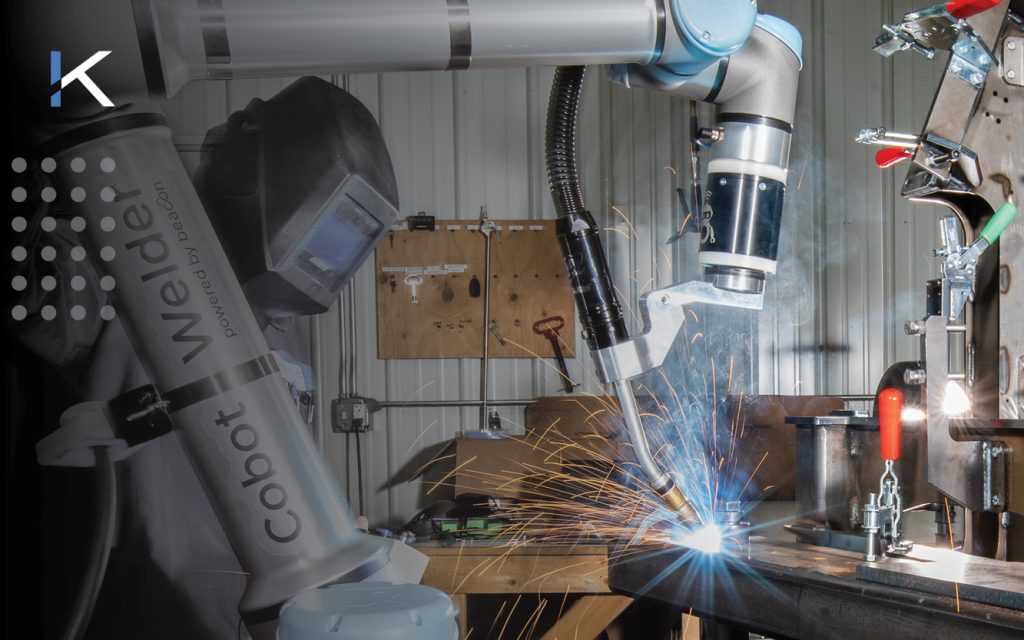Most robotics integration shops won’t tell you this, but if you don’t have great fixtures, you shouldn’t invest in a robot quite yet. Putting a robot into a process without fixtures will only create complexity and cause problems.
Instead, start with the fixture.
With custom positioning and fixturing for a welding robot, we brought an eight-hour weld time down to 45 minutes. It wasn’t the robot’s doing. The robot is what allows you to perform this weld over and over again, very predictably, at 45 minutes, regardless of the operator. But the fixture—the RT1 fixture welding table—is what delivered the nearly 94% efficiency gain.
So whether you already have automation in mind or you’re strictly working through a production-bound part design, you should be thinking just as seriously about fixturing.
Automation Is a Bust without the Right Fixturing
Fixtures are vital to the successful application of an automation cell. Without the right fixture, there isn’t a robot in the world that can deliver the quality you require.
It’s something nobody talks about, but we see it all the time: a customer has the right robots, but they haven’t assembled a single cell because they still haven’t figured out how to position and hold the part.
A general robotics integrator will consider the electrical aspects and the software programming, and they’ll likely implement a gripper. But holding the part for optimal surface access? That step gets completely overlooked. And entire projects fail as a result.
Welding fixtures
Let’s look at welding fixtures as an example.
Welders know that the best way to weld a seam is in the first position—flat. Sure, you can weld in the second position instead, but the weld will droop, you may not achieve the correct fillet, or the heat effect may reposition the part.
But welders are forced into the second position when their systems aren’t equipped to rotate and position a three-dimensional part for first-position welding.
You need custom welding fixtures and positioners that allow you to view every angle of the part and move it around. The right automation fixturing enables streamlined positioning and first-position welding on any side of the part.
CNC machining fixtures
In 4-axis or 5-axis CNC machines, you can progressively rotate your part around the axis so you don’t have to manually position and reposition it.
But machinists know that there are limitations to this approach, particularly with a fifth axis. The more complex the part, the higher the likelihood that your part envelope will shrink during rotation, causing the cost of your fixture to shoot up.
Expensive CNC machining fixturing can’t always be justified by the scale of the project, but when it can, custom fixtures are a great way to eliminate chatter, vibration, and surface abrasions to enhance part quality.
Automation fixtures
Even automation fixtures must be evaluated for cost efficiency. At Kinetic Technologies, we can automate a fixture to the equivalent of a 5-axis dual trunnion—but it won’t be cheap.
Your budget or time constraints may motivate you to stick with progressively loading your part, in which case you need to decide:
How will you move the part from one fixture to the next? Should you batch it?
Our team can develop specific tooling that enables you to pull the part in using whichever method makes the most sense for your project.
How We Build Custom Fixtures for Automation
Every custom fixturing job begins with your part’s CAD model. From there, we design the fixture with holds along the part’s key fixturing points. Finally, we implement the necessary clamping devices.
The process is both straightforward and iterative, beginning with the 2D CAD drawing in SolidWorks before advancing into RoboDK for simulation. We input the fixture, the positioner, and the intended robot (or manual method), then we examine two simulations:
- The interaction between the fixture and the robot
- The interaction between the robot and the parts
Once we’re satisfied with the simulation, we first rough out the fixture and then obtain parts from our customer so we can perform a real-world test and fix any “gotchas.” (There are always one or two issues that don’t appear in the simulation phase.)
Safety considerations
Every fixture comes with its share of safety concerns that we have to address. If it’s a moving fixture, how does the user stop it? How do we ensure that an operator doesn’t become entangled in it?
Recently, a customer enlisted our help simply to increase the safety of their fixtures. The fixtures were very old, without any modern safety features, and they presented an alarming number of opportunities to seriously harm an operator.
The Kinetic Technologies team follows ISO standards for machine-built safety. Guarding, shielding, stops, two-handed operation, getting the operator away from moving parts, pinch points: we evaluate our fixtures for all the relevant risks and build the appropriate safeguards into every fixture.
Tolerancing considerations
One of our earliest lessons? A 4×6 tube isn’t a 4×6 tube.
In one real-world scenario, we roughed out a fixture for a customer’s 4×6 tube part, but the fixture was entirely too tight for the part’s actual tolerance stack-ups.
This experience taught us to examine every contact surface and design a fixture that allows the manufacturing engineer to make minor fit adjustments that accommodate for variances in a part’s quality and tolerances.
DFA: Design for Automation considerations
You’ve heard of Design for Assembly. Well, this is the other DFA: Design for Automation. And we’ve found that designing a fixture gives the engineer a comprehensive look at their parts from an automation perspective.
Design for Automation is a sort of robotic sibling to Design for Manufacturing. When designing a part with a weld, DFM would guide you to make that part with the manual welding process in mind. Design for Automation is essentially the same; you’re still designing for a predictable load-and-weld sequence—only this one will be performed by a robot.
Full-Service Fixturing and Positioning Solutions
The fact is, we’re not doing something so proprietary and hush-hush and specialized that you could never do it yourself. Manufacturing engineers typically want to explore fixturing and positioning solutions. They just don’t have enough time.
But it’s a normal Tuesday at Kinetic Technologies when we’re working on how to fixture a lightweight aluminum part and how to secure a 5,000-pound grater blade. We’re fluent in this language.
And with customers in every industry, from agriculture OEMs to construction, consumer goods, and on-road/off-road applications, we’ve amassed diverse expertise that enables us to work quickly and successfully.
Learn more about the RT1 or reach out to talk about your fixturing requirements.





